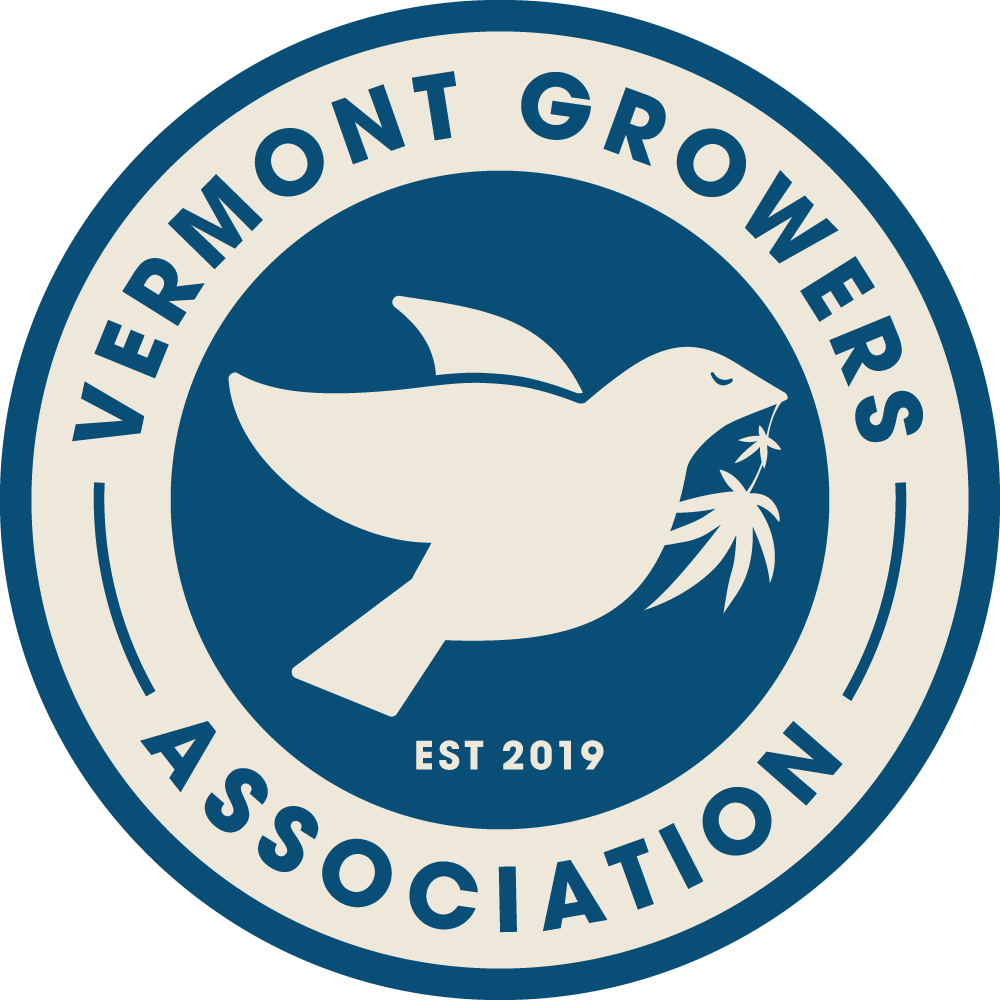
Overview
Since the start of Vermont’s adult-use cannabis market, the Cannabis Control Board has worked with lawmakers each legislative session to introduce legislation representing the agency's priorities, and that was Bill H.612 in 2024, an act relating to miscellaneous cannabis amendments, sponsored by Representative Michael McCarthy and Matthew Birong, the Chair and Vice Chair of the House Committee on Government Operations and Military Affairs at that time. Governor Scott enacted Bill H.612 as Act 166 on June 10, 2024. Act 166 has over 18 sections and includes significant changes to the medical cannabis program for the first time in many years.
Quick Facts
Bill H.612 became Act 166 (2024), enacting 18 sections of technical and substantive changes for the Vermont adult-use market and the medical cannabis program.
Lawmakers enacted cultivation districts and setbacks for outdoor cultivation in Act 166 against broad efforts and interests of the industry, reducing fairness and equity across the market and harming outdoor cultivators.
A significant new policy in this Act is the Medical-Use Endorsed Retailer license with the regulatory benefits of a medical dispensary, such as delivery and curbside pickup.
State-registered patients and caregivers will be able to purchase cannabis and cannabis products without sales tax and excise from a Medical-Use Endorsed Retailer.

A Break Down of Act 166 (2024)
Use the collapsable areas below to explore each section of Act 166 to better become acquainted with the law and how it impacts you.
-
The first section is about hemp and what constitutes a hemp product. It defines hemp using guidance from federal regulations, specifically a product with <0.3% THC by dry weight basis. It clarifies that any product regulated by the CCB cannot be a hemp product, but licensees may possess such product if they have the appropriate hemp license. Note that CCB Rule 2.17 bans synthetic and hemp-derived cannabinoids.
-
Section two lays out the advertising restrictions and repeals a previous restriction on “prizes, awards, or inducements” for purchasing cannabis products.
We support this relaxing of advertisements. This change will allow deals such as BOGO, as well as creative new methods for retail stores to sell products. This may encourage a more varied and creative retail experience and better customer outcomes.
-
This section allows the new Medical-Use Endorsed (MUE) retailer licensees to buy, possess, and sell cannabis and cannabis products otherwise prohibited under the THC caps. For example, a gummy that is 25mg, or bubble hash or rosin that tests 90% THC. Only state-registered patients and caregivers can purchase these products from MUE retailers.
We support increasing access to cannabis for medical patients and removing the THC caps from the law in their entirety.
-
Section 4 includes two distinct sections.
The first section charges the CCB with developing rules to implement performance standards to relegate a cultivator to a smaller tier and to grant a licensee a larger tier of production.
The second section covers the regulatory details for the Medical-Use Endorsement retailer license. It charges the CCB with creating rules regarding patient privacy, delivery, training, record keeping, patient access for those under 21, and other health and safety requirements.
The changes to cultivation licensing present a unique mechanism for managing production for the market, such that it has the potential to create a universal entry-point for growers to enter the market at the Tier 1 level with the option to demonstrate an ability to increase production, and similarly allows the agency to scale a licensee down to a lower tier of production – a scale-appropriate system we would support.
-
This section represents a significant new policy that creates a new Medical-Use Endorsed (MUE) retailer license comprised of the benefits medical dispensaries have, including delivery, curbside pickup, sales and excise tax-free sales to patients and caregivers, increased quantity limits per transaction, and the allowance to sell products impacted by the THC caps.
This new retailer license goes into effect on July 1, 2025. Before it does, the CCB must first develop rules for the license, including protection of patient privacy and confidential records, enhanced training and educational requirements for employees who interact with patients, and the segregation of cannabis products that are otherwise prohibited for sale to non-medical customers.
-
This section creates a new annual licensing fee of $10,250 for the MUE retailer license – that's $250 added onto the $10,000 annual license fee for retailers.
Note that we advocated for this new license fee to be less than a retailer license fee to help incentivize retailers to participate in the medical cannabis community and to support local patients and caregivers.
-
This section includes ulcerative colitis as an eligible medical condition for the medical cannabis program.
Note that we advocated for Irritable bowel syndrome (IBS) or associated symptoms, a broader category of conditions that includes ulcerative colitis.
-
This section increases all medical patient card renewals to three (3) years, no matter the condition.
-
This section reduces the license fee for medical dispensaries from $25,000 to $5,000 and their one-time application fee from $2,500 to $1,000.
-
Section 10 repeals the rule allowing the CCB to charge fees for advertisement review.
-
This is a technical section that gives greater power of what constitutes cannabis in a cannabis-infused product from the Department of Public Safety to the CCB.
-
This section requires the CCB to work with the Vermont Department of Health, the Vermont Medical Society, Green Mountain Patients Alliance, and the Cannabis Retailers Association of Vermont to assess the efficacy of the Vermont Medical Cannabis Program. Doing so with the goals of improving: the process of evaluating and qualifying conditions, communicating with patients on how to use cannabis, and defining appropriate regulations regarding vape devices.
-
This section amends the rules to exclude some buildings used in outdoor cultivation as public buildings. This should lower some of the burden on small season farms, who need a trim crew during the fall.
-
This section exempts MUE retailers from paying the cannabis excise tax and mandates that businesses record those transactions and report them to the Department of Taxes.
-
This section exempts MUE retailers from paying the state sales tax and mandates that businesses record those transactions and report them to the Department of Taxes.
-
This section transfers $500,000 from the Cannabis Regulation Fund to the Cannabis Business Development Fund. It also appropriates $500,000 from said business development fund to the Agency of Commerce and Community Development to fund “technical assistance and provide loans and grants.”
-
This section includes additional parameters for the agency's biannual statutory report on equity in the market.
It charges the CCB to work with local stakeholders such as the Vermont Housing and Conservation Board, the Vermont Land Access and Opportunity Board, the Vermont Racial Justice Alliance, the Office of Racial Equity, and the Agency of Commerce and Community Development to determine a percentage of Cannabis excise tax dollars to appropriate to the Cannabis Business Development Fund.
-
Section 16 imposes new restrictions on outdoor cultivators and the outdoor portion of mixed-use cultivators by implementing setbacks: 50 feet maximum in towns with no cultivation district and outside of a cultivation district if a town forms a cultivation district, 25 feet maximum if operating in a cultivation district, and 10 feet in towns with no zoning.
Act 166's setbacks and cultivation districts are regressive and problematic, we fought against them in the 2024 legislative session with our Coalition and feel the majority of the local cannabis industry, made evident by the roaring opposition from licensees to these sections of the bill during the legislative session, supports removing these new restrictions and maintaining that cannabis should be treated like farming.
By increasing uncertainty and therefore liability to current small cultivators and making it more difficult to join the market, we see this policy as reducing equity across the regulated market and in conflict with the original intent of the enabling statute, Act 164 (2020), to transition Vermont's legacy market equitably.
-
This section establishes that municipalities are allowed to adopt a bylaw that identifies cannabis cultivation districts preferred for outdoor cultivation on January 1, 2025. However, cannabis cultivation in the designated area should blend in and not change the aesthetics of the area. Also, the bylaw cannot be intended to prohibit outdoor cannabis cultivation in the municipality.
For cultivators operating in a designated cultivation district, the setback shall be no greater than 25 feet. For cultivators operating in a town with a designated cultivation district but outside the cultivation district, the setback shall be no greater than 50 feet. If a town does not have a cultivation district, the setback shall be no greater than 50 feet. If a town has no zoning, the setback is 10 feet. This means, by default, a town without zoning automatically has 10-foot setbacks for outdoor cultivators starting on January 1, 2025. There is no clear understanding of how the CCB will adopt and enforce this new policy for current and future licensees.
Similar to the setbacks in Section 16, this section is regressive and it will harm the market, especially outdoor cultivators, and stands in conflict with the original intent of the enabling statute, Act 164 (2020), to transition Vermont's legacy market equitably. We hope to remove these to remove the cultivation districts from the law in 2025.
-
This section requires the CCB to work with local stakeholders to assess the impact of Act 166's setbacks, cultivation districts, and rebuttable presumption for outdoor cultivators.

